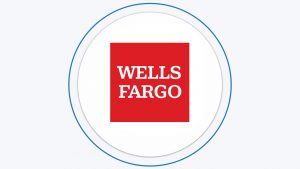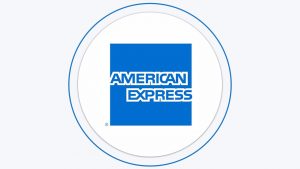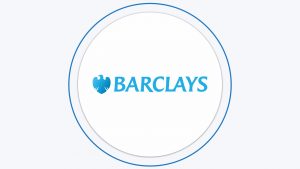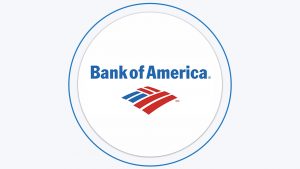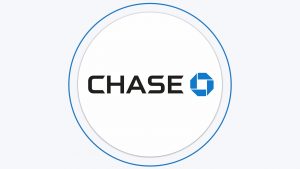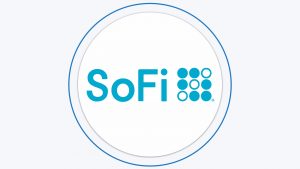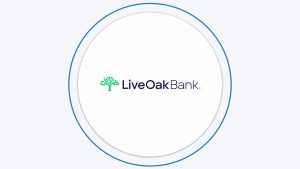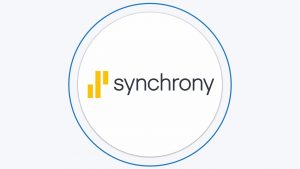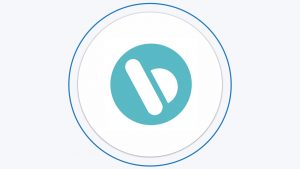Table Of Content
Even if you heard about the envelope budget system, you may not really know how it actually works or why you would want to use it, right?
How do you pay your bills? How do you do it online? What about when you run out of money? What about when you have a partner who needs money?
What is the Envelope System?
Let’s dive into this one right away. The envelope system is one that’s been around for quite a while, and with this system you need to actually have cash that you can pass out to the different categories within your budget.
Unlike other different budgeting methods such as the 50-30-20 rule or the zero-sum budgeting, You would use cash for absolutely everything in this budget, and when there’s no more cash that means there’s no more spending.
So, let’s say you have a category in your budget for groceries at $200 a month. That means you would have a grocery envelope with $200 in it.
When you buy groceries you would take that envelope with you and you would take money out of it for the cost. When the money is gone, you’re done spending on groceries for the month.
The same is true of your other envelopes as well. If you have a dining out budget and the envelope goes empty before the end of the month that means you’re done dining out until you replenish the money the next month.
The great thing is that this works for pretty much any discretionary or flexible expenses that you have in your normal budget. You can use it for things like gas, gifts, entertainment, clothes and a whole lot more.
On the other hand, paying your bills this way is generally not as successful. Now, you don’t have to pull all your money out and pay your bills in cash.
Instead, you can keep accounting for those online or through your bank account. Just make sure that you’re using the envelope method for your other spending (if it really works for you).
Getting Started With the Envelope System
So, just how can you actually use this system and make it work for you?
1. Create a Budget
The first thing you need is a budget. And you need to make sure that the budget you have is accounting for absolutely every dollar that comes into your bank account.
The best thing you can do is a plan for your month ahead of time. This is going to make sure that you are the one in charge of where your money is going instead of spending your money without even realizing it.
So, what do you do? The first thing is to take your monthly income and then look at the largest bills you pay every month. For most people, these will be things like the mortgage, the car payment or insurance. You want to take these out of the equation early, so subtract that amount from your total income. This will make sure that you don’t have to worry about things getting turned off in your household.
2. Make Some Ground Rules
This is where you need to make sure that you figure out where you’re spending money. You may want to use budgeting tools and apps or you may want to use a spreadsheet or pen and paper.
Make sure you’re logging everything you spend though.
You’ll need to decide what categories you’re going to keep and which ones are going to be paid through your envelope system.
Remember that you should be creating as many envelopes as you need to account for the discretionary money you spend each month.
You might have things like groceries, gas, entertainment, clothing, household expenses, etc. Create whatever envelopes you need that fit your life.
3. Choose Your Form
You’ll need to decide whether you’re going to actually use cash or whether you’re going to opt for a debit card. Note that’s a debit card and not a credit card. For some bills it can be difficult or time consuming to pay with cash.
As a result, you might want to stick with your debit card for these expenses.
When it comes to the other expenses look at areas where you tend to spend too much money. These are areas where you should be using the envelope system because it doesn’t allow you to overspend.
You never know how much you’re going to want to spend in those areas and if you’re using digital methods of payment you don’t even pay attention.
When you pay your mortgage or your cell phone bill, however, these are fixed costs so they’re easier to plan for and you’re less likely to overspend in these areas (in fact it’s nearly impossible in some of them).
Research actually shows that it’s practically impossible (okay, maybe just highly difficult) to get yourself into debt when you’re only using cash.
You’re less likely to make impulse purchases and you’re going to be really clear about how much money you actually have.
4. Get Your Envelopes Organized
Once you’ve determined the envelopes that you’re going to use it’s time to actually create those envelopes. So, get them out and start labeling with each category.
Now you want to add up how many categories you have and divide the money that you have for discretionary spending into those categories.
Now, you might want to add a little to some envelopes and take from others (maybe you don’t need a full 1/10 of your money to go toward clothing each month but you’d like a little more for eating out, as an example).
No matter how you do it, put your cash into each envelope. Now you can spend that money through the month.
5. Extra Money
There might be some months where you have money left over in a certain envelope at the end of the month. If that’s the case you want to make sure you’re putting it where it will do the most good, your savings.
Just clear out the envelopes and put that money into your savings account so it’s ready for the next emergency you might have (or your retirement).
What If I Run Out of Money in My Cash Envelope?
Borrowing money from one cash envelope during the month is definitely not the way to go.
If you’ve set up your budget so that you have more money in one envelope than the other that’s fine, but if you get into the middle of the month and realize your clothing envelope is empty you need to stop spending in that category. You want to stick to your budget, after all.
The whole point of you getting into this process is to make sure that you’re controlling the amount of money that you spend in any given area. And that’s going to require you to stay focused on the end result.
Working With Your Partner
What if your partner needs to be able to make purchases out of those envelopes as well? The best thing to do is give the envelope and the money in it to the person who is responsible for most of the work related to that category.
If you do all of the clothes shopping you should have that envelope. But you might want to allocate a small amount to your partner.
If you and your partner share in a task, such as grocery shopping, but you don’t go together then you should each have half of the money at the start of the month so you can each do the shopping.
If your partner only occasionally stops at the store when you ask them to pick up something give them a little of the money so that they can make a quick run when needed, but you have most of the money because you do most of the shopping.
What if I Spend All Of The Money?
When you run out of cash you’re done spending in that category. Now, if you haven’t planned all of your envelopes quite right you might find that you have the money budgeted to go into envelopes but you have an unexpected expense.
What if you suddenly realize that there’s no gift budget but your nieces birthday is next week? You’re going to need a present and you can’t take from the other envelopes. What do you do?
The best thing you can do is make sure that you have a miscellaneous envelope built into your system. This is going to make it easier for you to handle those unexpected or forgotten items that you need without having to break your budget.
Envelope Budgeting System – Benefits
Here are the most important benefits of the envelope budgeting method:
- See the Savings
When you’re working with envelopes and cash you’re able to actually see the money that’s there.
You’re able to see where you’re actually saving and you have visible cash at the end of the month to put into your savings, which makes it really easy for you to save and feel like it’s doing something.
- Build Up Discipline
You have to do some planning in order to make your envelopes work and to be sure that you’re getting the items you need or that you really want but skipping over the rest.
It’s definitely going to keep you from those impulse purchases and you’re going to be really able to stick with spending what you have.
- No Overdraft Charges
How many times have you gotten an overdraft charge because you spent more on your card than you had available? It probably happens quite a bit, right?
And that can’t happen when you’re only spending cash. There’s no ability to spend more than you have.
- Spend More Sensibly
When you have cash that you spend through your envelopes it makes you more likely to really pay attention to where you’re spending.
You’re more likely to think carefully about a purchase and you’re actually likely to spend as much as 15% less money when you’re spending with cash.
- Have Emergency Money
This process means that you’re going to have an emergency fund available at any moment if you need it.
You have cash right there, available for you, no matter what. That’s going to be a great thing if something comes up, but remember that the money in your envelopes needs to be replaced if you take it out.
Envelope Budgeting System – Disadvantages
Now, when you’re first getting started you might find a few of these things to be big problems for you. You might also find that it’s a little bit difficult because you have to divide out different purchases and figure out what envelopes you should be using.
While you can master it eventually, there’s a bit of a learning curve involved in the process.
- Must Carry Cash
You’re actually going to be carrying a decent amount of cash all at the same time.
Now, you know you’re not going grocery shopping or you’re not picking up clothing you may be able to leave those envelopes at home this time around, but often you might need to carry each of your envelopes and that can be a bit of a headache.
- No Credit Card Rewards
If you were the type of person who gets a whole lot of credit card rewards every year that’s not going to happen anymore.
With spending only cash you’re going to have no extra bonuses for your spending, except for the bonus of not being in debt.
- Strict Process to Follow
The fact that this is so strict can be a little difficult for some.
They don’t like the idea that there’s no leeway and that they can’t swap money back and forth between envelopes or spend money as freely as they might have wanted.
- Need to Get the Cash
When it comes to this type of spending you need to have cash and chances are your boss isn’t handing it to you on payday.
You get a check deposited and then you have to go and get the cash from the bank or the ATM. It can be a little bit of a hassle for some, but it’s definitely going to help.
Keys For Success
Here are the best tips to make yourself succeed during the process:
Find Free Activities
You can absolutely have a lot of fun without having to spend a lot of money.
When you don’t have money you’ll be able to do things like playing games, going for a bike ride, going to the park, even doing some events in your town that are completely free. What could be even better than that?
Create Weekly Amounts
Instead of giving yourself a set amount of money for dining out in a month give yourself a set amount per week.
This feels like you have more and it makes sure that you’re not dining out all week in week one and then stuck without any dining out for the rest of the month (which can be frustrating).
Don’t Get Sucked In
It’s easy to get pulled into buying things that you don’t really need or even really want just because the advertising looks cool.
You feel like you really want to do something because it seems like everyone is doing it and that’s just going to cost you money.
Skip the Credit Cards
You’re not going to be spending on credit cards, so don’t even take them along with you.
Just leave those credit cards at home and make sure that you’re only paying with the cash you have. You may need to do some calculations, but you’ll be able to make sure you only spend what’s there.
Have Some Fun
You should be able to have fun with saving your money. Don’t look at it as being deprived of things you want.
Instead, look at it as being given the chance to save for your future or to prepare yourself in some way. You’re going to be doing great and having less stress because you’re not concerned about your finances.


